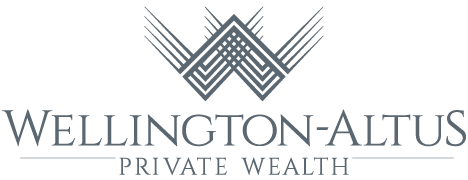Eight Tax-Smart Ways to Access Your RRIF Withdrawals
As the year draws to a close, many retirees turn their attention to mandatory Registered Retirement Income Fund (RRIF) withdrawals. This year, there is added anticipation about whether the Federal government will follow through on its election promise to reduce 2025 RRIF minimum withdrawals by 25 percent. At the time of writing, no announcement has yet been made.
However, even without any temporary changes to the rules, there are many strategies you can consider to manage taxes effectively when it comes to your RRIF withdrawals.
1. Delay withdrawals until year-end. If you don’t need monthly income from your RRIF, consider making withdrawals closer to the end of the year. This approach can allow your investments more time to compound and grow. For those converting the RRSP to an RRIF at age 71, remember that mandatory withdrawals don’t begin until the following year.
2. Use the pension income tax credit at age 65. RRIF withdrawals generally qualify for the $2,000 non-refundable pension tax credit, starting at age 65. If you don’t yet have an RRIF, converting a small portion of the RRSP to an RRIF before age 71 may be one way to take advantage of this non-refundable credit. You may also be able to split pension income with a spouse/ partner, which can reduce taxes or improve access to income-tested government benefits.
3. Don’t forget pension income-splitting. If you have a spouse in a lower tax bracket, you can elect to report up to one-half of your RRIF withdrawals on their tax return once you are 65 years or older. This can reduce overall household taxes paid.
4. Need funds beyond the RRIF minimum? Consider with drawing from non-registered accounts first. If you are in need of funds above the mandatory RRIF requirement, consider which accounts to withdraw from to manage your overall tax liability. For example, capital gains in non-registered accounts are taxed at a lower effective rate than RRIF withdrawals because only 50 percent of capital gains are included in taxable income. This may help preserve tax-sheltered growth within the RRIF.
5. Adjust RRIF withdrawals according to your tax bracket. In years when your taxable income is lower, it may make sense to withdraw more than the RRIF minimum requirement. Doing so can take advantage of a lower tax rate and provide greater flexibility in future years.

6. Base withdrawals on a younger spouse’s age. If you have a younger spouse, you can use their age to calculate your RRIF minimum requirement, which can reduce required withdrawals and maintain flexibility, as you can always take more than the minimum if needed. This approach preserves optionality. However, do note that you will need to elect to use a spouse’s age when you first set up the RRIF.
7. Fund the TFSA with RRIF withdrawals. If you don’t need the full RRIF minimum withdrawal requirement, consider contributing excess funds to a TFSA, subject to contribution limits. This allows continued tax-advantaged growth, since
future TFSA gains are tax free.
8. When estate planning, name a spouse as the “successor annuitant.” When considering beneficiary designations for your RRIF, if you are designating a spouse or common-law-partner consider naming them as the “successor annuitant” rather than the “beneficiary.” This allows the RRIF to continue seamlessly after your death. The spouse becomes the annuitant, simplifying administration for the surviving spouse.
Plan Ahead
RRIF withdrawal considerations should be part of your broader retirement income plan. Early planning—well before any mandatory withdrawals begin—can create opportunities to reduce taxes, maximize growth and improve flexibility. Every situation is unique, so working with a professional tax advisor can help you craft a personalized strategy that meets your financial goals. If you have any questions or require support, please call the office.
The information contained herein has been provided for information purposes only. The information has been drawn from sources believed to be reliable. Graphs, charts and other numbers are used for illustrative purposes only and do not reflect future values or future performance of any investment. The information does not provide financial, legal, tax or investment advice. Particular investment, tax, or trading strategies should be evaluated relative to each individual’s objectives and risk tolerance. This does not constitute a recommendation or solicitation to buy or sell securities of any kind. Market conditions may change which may impact the information contained in this document. Wellington-Altus Financial Inc. (Wellington-Altus) is the parent company to Wellington-Altus Private Wealth Inc. (WAPW), Wellington-Altus Private Counsel Inc. (WAPC), Wellington-Altus Insurance Inc. (WAII), Wellington-Altus Group Solutions Inc. (WAGS), and Wellington-Altus USA Inc. Wellington-Altus (WA) does not guarantee the accuracy or completeness of the information contained herein, nor does WA assume any liability for any loss that may result from the reliance by any person upon any such information or opinions. Before acting on any of the above, please contact your financial advisor..
©2024, Wellington-Altus Private Wealth Inc., Wellington-Altus Private Counsel Inc., Wellington-Altus Insurance Inc., Wellington-Altus Group Solutions Inc., and Wellington-Altus USA Inc. ALL RIGHTS RESERVED. NO USE OR REPRODUCTION WITHOUT PERMISSION. www.wellington-altus.ca
If you no longer wish to receive commercial electronic messages from Wellington-Altus Private Wealth Inc., please send an email to unsubscribe@wellington-altus.ca



